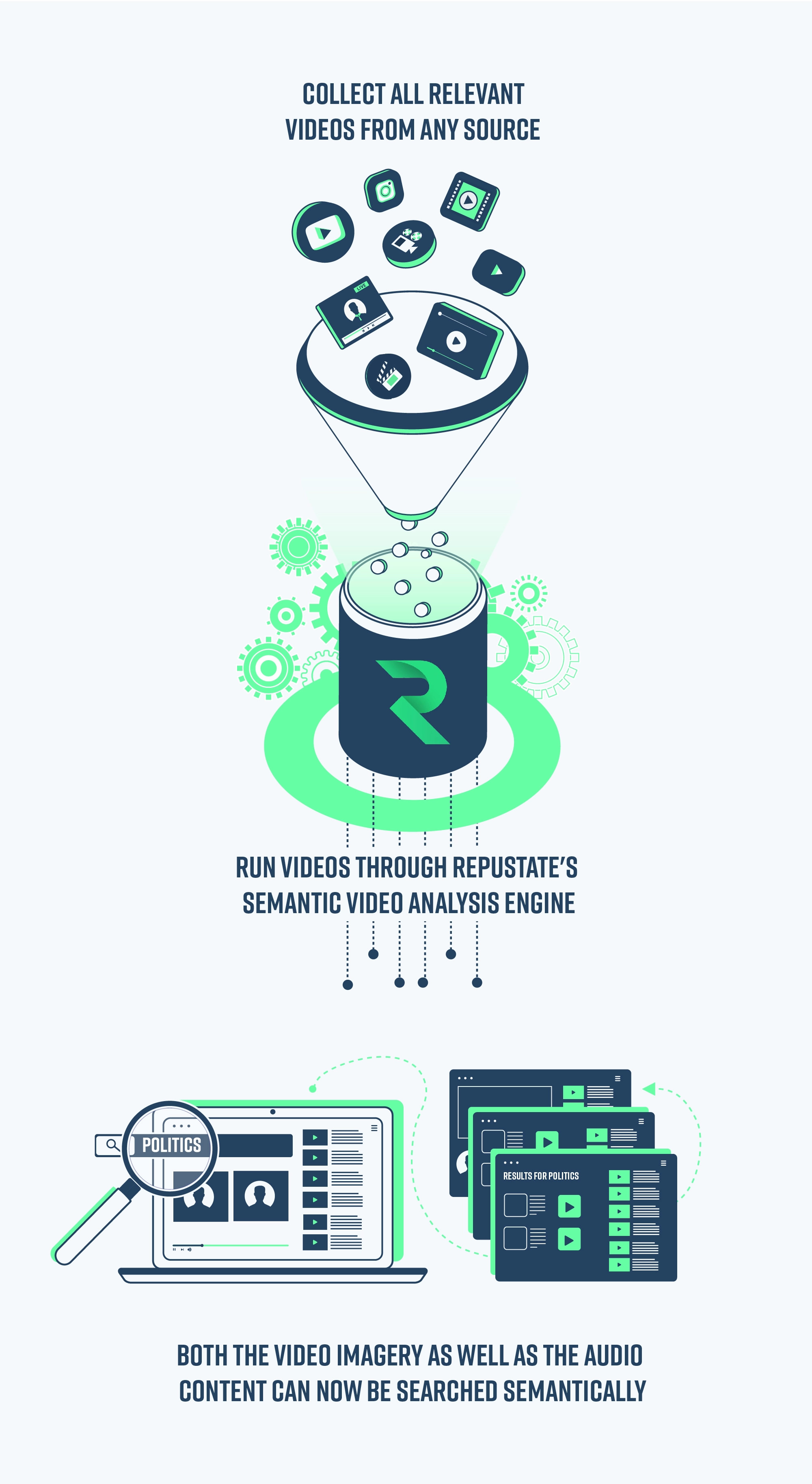Search in video finds that exact moment you're looking for in your video content
Book a 15-minute demoWhat is Search in Video?
Search in Video helps you explore and discover insights across your entire video library by identifying all relevant topics, themes and subject matters. You can search inside videos for words, text overlays, logos, images, and other metadata faster and more accurately. Because of this, you avoid fruitless manual scans of your video library, and save time and money.
Search in Video knows precisely which moment in a video any key topic is mentioned and offers a multilingual "Video Word Search" feature. The platform offers dynamic suggestions of timestamps related to media fragments that make it quicker and easier to unlock the potential of your video content. Your entire video repository can also be thus contextualized and used to gain business insights through sentiment analysis.
Step 1. Converting speech to text
The tool converts videos to text through the use of speech-to-text models. These models are unique to each language and are built using neural networks
Step 2. Indexing the text
The model indexes the text section by section. Videos are broken into sections based on different parameters such as pauses or change in speakers. By analyzing the content section-wise, we get enough context to disambiguate entities. This also helps in yielding timestamps for each keyword or defined entity.
Step 3. Extracting matching results
Now that we have timestamps of videos associated with entities, themes, and topics found in the text, when deep search is applied, it yields all matching sections or snippets in the source video.
Named Entity Recognition
Video content analysis uses named entity recognition (NER) to highlight the entities found at each timestamp, allowing you to scrub and search for the video at the exact point you want. Repustate's semantic search for video is supported in 27 languages and dialects. It can address videos from all sources including social media listening, corporate knowledge management repositories, and online video libraries.

See Repustate's Search in Video in action
Book a 15-minute demo todayThe video content search challenge
The major challenge in video content search is the quality of the tool in its ability to allow search, organize, and access video assets in a semantically relevant way. Handling multiple languages is also a major challenge. Without the ability to offer deep search in multiple languages, like Repustate does, a video search tool cannot give a granular level of search performance. This granularity can be based on topics, themes, names, entities, voice changes, pauses, or any other key characteristic
What makes Repustate's Search Inside Video Unique?
Repustate’s video search solution can not only organize and semantically segregate video content, but also conduct YouTube sentiment analysis and TikTok sentiment analysis seamlessly. It recognizes brand logos in the background, and allows you to search for posts, chats and comments in social media videos. Use it confidently to extract brand insights, competitor intelligence, and amplify brand recognition from any source.
- - Multilingual video content analysis
- - Analysing caption overlay
- - Capturing and index imagery
- - Search posts, chat & comments in videos
- - Custom made for each industries
- - World's fastest NER API
Book a personalized 15-minute demo to learn more about Repustate's Search in Video technology
Book a 15-minute demo todayWhat are the applications of a Video Content Search platform?
Our video content search tool gives the latest advancements in image recognition and video & audio data mining for actionable insights just like a text analytics API does for text data. Find insights from Voice of the Customer (VoC) data from Vimeo, YouTube, Facebook, or your own video repositories, at your fingertips. Areas in which video content search is applied include:
- Enterprise Knowledge Management
- Academic Archiving
- Business Directories
- Marketing Campaigns
- Smart Devices
- Editing Suite Platforms
- News Monitoring
- Footage Libraries
- Research
- Podcasting









